TRENDING
Top American Colleges To Avoid
Published
5 years agoon
Heading off to college can open all kinds of doors to adventure in life. Of course, many of us want to walk away with a degree in our hands at the end of it all, but there are so many other reasons to go pack your bag and head off to college.

To start, college can be a great place to meet friends that last a lifetime. It could also be a chance for many of us to learn what it’s like to be an adult – bills and all. Sadly, as much as college can be a unique experience, it often comes at a cost. If you’re spending all of that money on furthering your education, you want to make sure you’re heading off to the best college that money can buy, right? You might also want to ensure that you avoid one of the worst colleges in America.
Montserrat College of Art, Massachusetts

The Massachusetts Institute of Technology sets the bar pretty high in the state. Sadly, it can make other colleges look limp in comparison, and it seems as though Montserrat College of Art is one of the few that has been caught up in it all. The college has a pretty high graduation rate compared to others ranked as the worst, as 48.5% of students make it to the end. It’s money talk that brings Montserrat down. Students have a median salary of $26,500 after six years compared to the $47,340 of debt thanks to their college course.
Columbia College Hollywood, California

When you think of Hollywood and Los Angeles, the chances are that you think of glitz and glamor, right? While that might be the case throughout many parts of the city, that’s not the entire story for Columbia College Hollywood. Students here get to focus on everything from scriptwriting to media studies and film to special effects, but it comes with a price. Students have to pay around $10,000 more than other average colleges offering the same course, and only 35% of students ever graduate from the college. Even with a degree, you’ll still have to battle Hollywood.
Montana State University Billings, Montana

Montana State University Billings has got some things going for it. The college has a high rate of employment, with 89% of graduates finding work within two years of graduating. Unfortunately, things quickly start to go downhill from there. Only 27.8% of students graduate from the college, with 11% making it out on time. As if that wasn’t enough, the high rate of employment means students can quickly start to pay back the average $22,448 debt they acquire throughout their time here.
Mitchell College, Connecticut

A degree from Mitchell College in Connecticut might not be worth it to many students with a median salary of $32,000 after six years and average debts of $31,848. Even with high costs and not much return on investment, 46.2% of students do end up graduating from their course. This is pretty close to the national average of 59%. However, many students can’t get over the price – especially when they learn what they get for all that money. There have been plenty of complaints about the quality of food, WiFi that doesn’t work, and outdated classrooms.
Grambling State University, Louisiana

Some of us want nothing more than to have a great time at college. If that’s the case, then you might think about enrolling at Grambling State University in Louisiana. However, there might be a few reasons to hold off if you want more than friendship from this college. Only 35% of the annual 4,000 students that enroll at Grambling State University end up with a degree at the end of it all. If you’re lucky enough to be one of the educated few, then you can also look forward to average debts of $25,732 for the privilege.
Nevada State College, Nevada

It can be tough to see why Nevada State College is one of the worst colleges in America. Sure, it might only have a graduation rate of 27.6%, but the median salary is pretty impressive. That’s because students averagely go on to earn $47,600 within a decade of graduating. The average debt is also somewhere around $11,000, meaning on paper it looks as though most graduates would thrive. So why do so many students end up defaulting on their payments? We may never know, but it doesn’t help the college’s reputation.
Saint Francis University, Pennsylvania

Saint Francis University is often referred to as one of the more picturesque colleges thanks to the 600 acres of forests and farmland that engulf the buildings. Sadly, that doesn’t take away from the figures – especially when it comes to the return on investment that graduates get from their degree. 20 years after graduating from Saint Francis University, graduates can expect to have a grand return of negative $26,000. That’s quite the debt after all those years in the classroom, and one that might just haunt students for the rest of their lives.
California State University Los Angeles, California

Who doesn’t want to enjoy learning alongside the heat and beauty of California? That’s what thousands of students must think, including the 27,000 who enroll at College State University Los Angeles each year. It’s a pretty large college that has a huge variety of degrees on offer to prospective students. While it might look good on paper, the college has come under fire due to its practices and control over the students. The college decided to impose a tax on free speech before they eventually abolished the new rule. Sadly for them, its reputation has been tarnished ever since.
Texas College, Texas

This state is home to some of the best education across America. Sadly, with the good comes the not-so-great. Texas College has earned a reputation among students as one of the worst colleges across the nation – and it’s all to do with the figures. A four-year course at Texas College will set you back around $84,000. While that might not seem too expensive, the return of investment is where things take a nosedive. After 20 years, students can averagely expect to find themselves around $46,900 into the red.
Rensselaer Polytechnic Institute, New York

It’s not just public colleges that have come under fire; many private colleges are also considered to be some of the worst colleges in America. The Rensselaer Polytechnic Institute in New York opened its doors back in 1824 and has been standing ever since. Although many students graduate each year, they aren’t all happy about their time here. The college has been slammed for its outdated policies as well as supposedly trying to restrict the free speech it hands to its students. All of this means that many students are more than a little disappointed with their experience.
Nazarene Bible College, Colorado

Getting into Nazarene Bible College is a major goal for some students as the private religious college is one of the best places to study philosophy. Unfortunately, landing a spot on a course doesn’t mean that students will find things easier once they graduate. A large percentage of people that graduate with their philosophy degree admit that they struggle to find work thanks to the rare job opportunities within the philosophy world. In the end, most students usually end up opting for part-time teaching positions instead of the fully-fledged career that many imagined.
LeMoyne-Owen College, Tennessee

Although plenty of students try to work their way to LeMoyne-Owen College in Tennessee, only 20% of students end up graduating. One of the draws to the college is the $11,900 annual cost. This doesn’t often help debt issues as students that do graduate end up with an average debt of $36,796. As if that wasn’t enough, the median salary is a mere $28,400 after six years. All of those figures have led to more than one-fifth of graduates being forced to default on their debt.
Virginia Union University, Virginia

There is plenty of competition when it comes to becoming the best college in America. It seems that Virginia Union University is struggling to keep up. Only 25.4% of students end up graduating with one of the main reasons for the low number being all down to the cost. Graduates leave with an average of $24,524 of debt, with approximately 15% of students forced to default on their debt. Even though 92%of graduates are employed within two years, the median salary is only $32,000.
Peru State College, Nebraska

Some state colleges go on to be one of the top ones on offer. Others? They sit somewhere toward the bottom of the kist. Peru State College isn’t the worst college on offer in America. Still, many consider it to be one of the worst when it comes to studying in the Cornhusker State. The college has a graduation rate of 36.7%. It sounds relatively impressive compared to some, but that changes when we learn that just 11% of students graduate on time. Thankfully, one benefit is the median salary of $37,500 within six years of graduating.
Mt. Sierra College, California

When it comes to colleges, Mt. Sierra College is relatively new as it first opened its doors in 1990. The college boasts courses designed for people interested in business or technology. Amazingly, many of the students have nothing but praise for their professors and their knowledge in the fields, but the recognition doesn’t quite add up in the numbers. A mere 6.2% of students end up graduating with their new degree. Just because the teachers are talented doesn’t mean that it’s enough to keep most of these students interested in learning.
Heritage University, Washington

While Washington has some pretty great colleges, there are some that bring the standard down. Heritage University is one. The college has a high graduation rate of 84.1%, but don’t let the figures be deceiving. A mere 4% of students actually graduate on time. Another negative for the college is the median salary after six years. The state’s average is $61,896, while Heritage University graduates can expect to earn $35,900. In the end, the debt means that around 12% of graduates are forced to default on their loans.
Lindsey Wilson College, Kentucky

The thought of packing bags and heading off to Kentucky has been enough to draw many people to study in the state over the years. Lindsey Wilson College is one of the many colleges on offer. The college takes on approximately 2,600 students each year, but most of them never make it to the end of their degree. The graduation rate is a slim 31% as many students end up transferring or dropping out along the way. Thankfully, the debt isn’t the largest. Students averagely have around $21,000 of debt to their name after earning their degree here.
Stevens Henager College-Ogden, Utah

At first, it seems as though the Stevens Henager College-Ogden in Utah has some pretty high graduation rates compared to some of the other worst colleges. That’s thanks to the 42.4% of students that make it out the other side with a degree. It’s not until we look a little closer and learn that only 18% of students graduate on time that things start to take a turn. After six years, the median salary is a measly $28,800 – way below the national average of $61,557 and the $34,640 of debt graduates earn from the college.
Benedict College, South Carolina

It appears as though great colleges are hidden all across America, with South Carolina being home to a few. Unfortunately, Benedict College isn’t up there with some of the greats. To start, only 31% of students end up graduating with their new degree. The other confusing aspect? The high amount of debt compared to the low fees. The college averagely costs $9,184, yet students end up with an average debt of $45,144. When you team those numbers with a median salary of $25,500, it might not be a surprise that so many graduates default on their debt.
St. John’s College, Maryland

There are plenty of picturesque colleges across the nation with St. John’s College in Annapolis, Mayland, being no exception. The luscious trees keep the delicately designed buildings hidden away from the rest of the world. Although it might look pretty impressive, it turns out that St. John’s College has a hard time keeping hold of its students. Many students decide to transfer colleges or leave altogether before reaching the end of their degree. Surveys have also revealed that a mere 67% of students are confident that a degree earned here will help them find a job in their chosen field.
Jackson State University, Mississippi

Thankfully, Jackson State University in Mississippi has a positive reputation for being one of the most prominent HBCU colleges across America thanks to its inclusivity of people from minority backgrounds. Taking a class here means you will spend most of your time focusing on new information and research, but that’s where the positives mostly come to an end. Jackson State University is also famous for the terrible return on investment when it comes to post-college salaries and student debt – not something that most of us want from a college.
Goshen College, Indiana

If you prefer a small town where everyone knows your name compared to a big city, why not think about enrolling at Goshen College? There are plenty of reasons that it might be time to skip this one. The college has just 1,000 students at a time. What it lacks in students it makes up for in costs and reports suggest that four years here could cost a whopping $159,000. To top it off, the return on investment leaves little to the imagination. After 20 years, students can averagely expect to be $29,000 in the red.
Pacific Oaks College. California

It might be unfair to label Pacific Oaks College as one of the worst colleges in America as no one really knows much about what goes on inside the classrooms. However, that’s one of the reasons that many students steer clear of it altogether. The college is found in California and usually has around 1,200 students under its wing at any one time. Most students refuse to give away any secrets from the inside. In contrast, many others struggle to land themselves a high-paying career at the end of their degree, thanks to attending such a niche college.
Mississippi Valley State University, Mississippi

Things start to look good at Mississippi Valley State University as the college costs around $14,500 a year. Even so, students walk away with an average debt of $32,252, which can be pretty tough to pay off. That’s all thanks to the median salary of just $23,200 after six years of working. This isn’t a problem for many people that end up enrolled at Mississippi Valley State University as only 29.8% end up graduating. All in all, this has led to a high rate of defaulting on loans and many years of living in debt.
Pacific Northwest College of Art, Oregon

Like many other art schools, the Pacific Northwest College of Art has some pretty steep tuition fees. Average student debt usually sits around the $22,716 mark while graduates earn a median salary of $27,400 after six years. Not only does that make it tough to pay off the debt, but it also makes it practically impossible to live in Oregon. The college has a graduation rate of 57.6%, but it also sees 6.9% of students default on their loan – a relatively low number compared to the living costs in Oregon and the debt of the degree.
Florida Memorial University, Florida
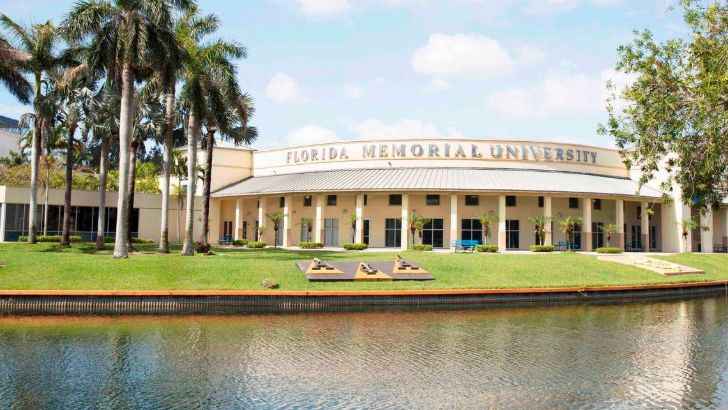
The Sunshine State is excellent for youngsters looking to move away and start a new life under the sun. The Florida Memorial University can seem like a popular choice for students, but you may want to hold off on that application. Many past students haven’t seen their investment pay off, thanks to the $22,270 college fees. While that might not sound like a lot, the median starting salary for graduates stands at $36,600 – and that’s if you even get there. Florida Memorial University has a graduation rate of just 38%.
Bloomfield College, New Jersey

The state of New Jersey is close to some of the top colleges in America. Unfortunately, it is also home to one of the worst. That’s right; we’re talking about Bloomfield. The college is better than some of the other colleges considered to be at the lower end of the list, as 31.9% of students end up graduating. Even with small average debts of $26,044, some students still aren’t happy. In fact, nearly 15% of graduates are forced to default on their loans. Pretty suspicious considering 92% of students find employment with their new degree.
Shaw University, North Carolina

It turns out that not many people end up graduating from Shaw University in North Carolina as the college has a graduation rate of 25.4%. Some find the figure a little strange as Shaw University has an acceptance rate of just 52%, meaning that students have had to outdo a lot of competition to land a place. The average $28,044 debt compared to the $29,200 median salary after six years might make it less of a surprise that almost one-fifth of graduates end up having to default on their loan after three years.
Johnson University, Tennessee

Johnson University takes just 700 undergraduates a year, meaning that it can be tough to get it if you make it your college of choice. This means it’s pretty calm and quiet compared to many other colleges across the nation. Amazingly, 63% of students here end up graduating. While it might not be the best number, it’s higher than many other colleges thought to be the worst in America. Unfortunately, it’s the struggle to land a job with the new degree and the below-average median salary that brings Johnson University down.
California College San Diego, California

One of the most important aspects of any college is its professors. So why are only an average of 19% of professors full-time teachers at the California College San Diego? The lack of full-time teachers means that some students struggle to get time with their professors. It might be little surprise that only 36% of people end up graduating from this college. The worst part? High living costs and intense competition in the area means that students leave with an average $31,884 debt while only making $39,800 a year after six years of work.
Fountainhead College of Technology, Tennessee

The clue is in the name with this one as the Fountainhead College of Technology is known for, well, technology! Students here might think they are signing up for the best, but the college has actually been named as one of the worst five colleges in America. It turns out that a very small number of students actually walk away with a degree while even fewer graduates end up seeing a return on their investment. Cue many years of debt, and it might not be so hard to see why students are starting to avoid the college altogether.
Bacone College, Oklahoma

Students looking to enroll at Bacone College in Oklahoma might have to prepare for the chance they will never graduate. That’s because the college has a graduation rate of just 14.9%. As if that wasn’t enough already, a mere 6% of students actually graduate on time. Bacone College is also thought to be on the pricier side of things, with students averagely walking away with $25,220 of debt. Although 90% of graduates end up finding work within two years, the median salary is just $34,500 after six years.
Baker College in Flint, Michigan
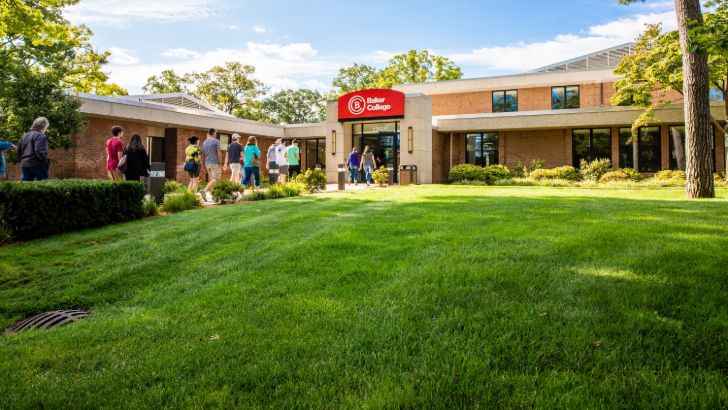
It’s not just the Flint water crisis that has put this town on the map. It turns out that Baker College hasn’t helped to boost the ratings either. Of the students that enroll in college, only 21.1% end up graduating. If you do make it that far, you’ll find yourself walking away with an average debt of $22,852. Although it might not seem like much to some, it can be tough to pay off as the median salary for graduates is $27,200 six years after graduation. The good bit? 82% of students are employed within two years.
Wesley College, Delaware
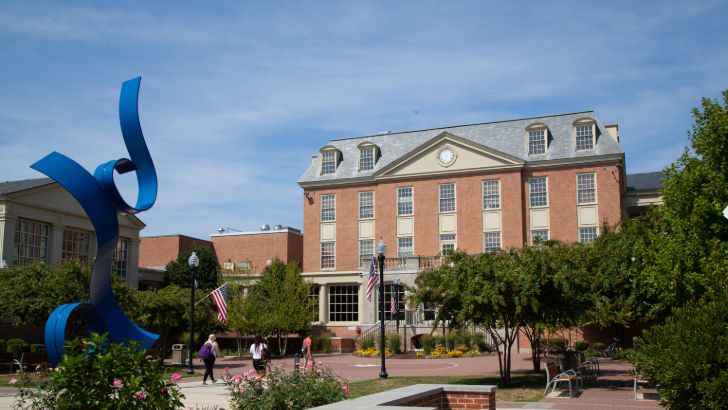
You have to be prepared for a fight if you want a place at Wesley College in Delaware as it has a low 62% acceptance rate. With that in mind, why do so many freshman students end up dropping out of their course? That’s right; only 31% of students end up graduating – so what gives? Students tend to leave Wesley College with an average $31,084 debt and go on to earn a median salary of $42,900. There is no apparent reason as to why so many students leave, but something seems to be getting under their skin.
Black Hills State University, South Dakota
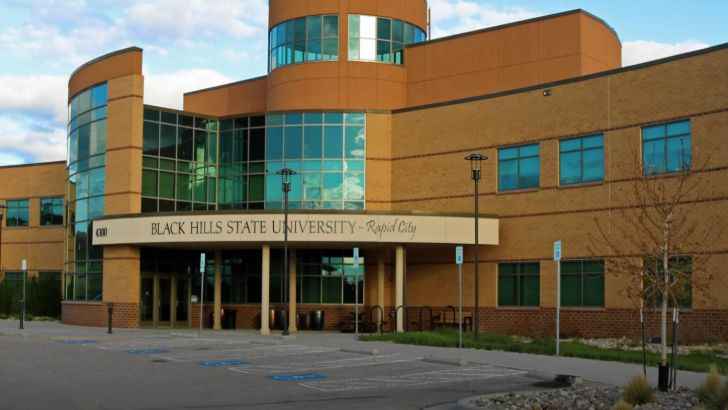
If you love to be away from the hustle and bustle of the city and surrounded by the great outdoors, you may consider signing up to Black Hills State University in South Dakota. The college is surrounded by 123 acres of buildings and land that come together to make the campus. There are also just 4,000 students enrolled here, meaning that students have plenty of space to stretch their legs. Unfortunately, it’s the return of investment that leaves students in the negative that puts so many people off signing up for a place at Black Hills State University.
Central State University, Ohio
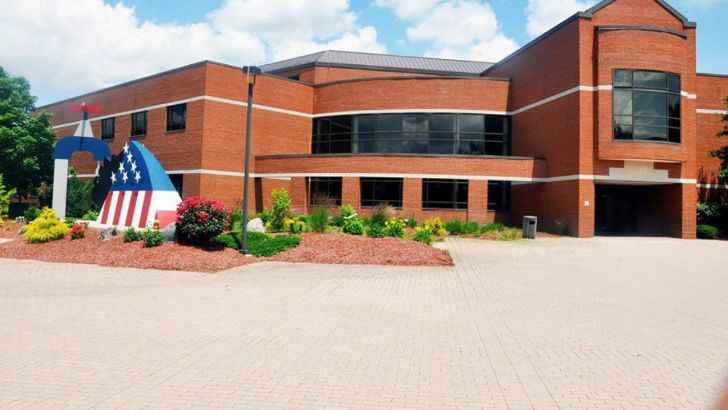
The graduation rate starts low – and things only go down from there for Central State University in Ohio. It turns out that just 22% of students graduate. Thankfully, they have a reasonably low average debt at $26,896. How can a college with a 91% employment rate after two years and a median salary of $26,100 be scored as one of the worst colleges in America? That’s thanks to the vast number of graduates that end up having to default on their loans. The figure? A staggering 27.8%.
Philander Smith College, Arkansas
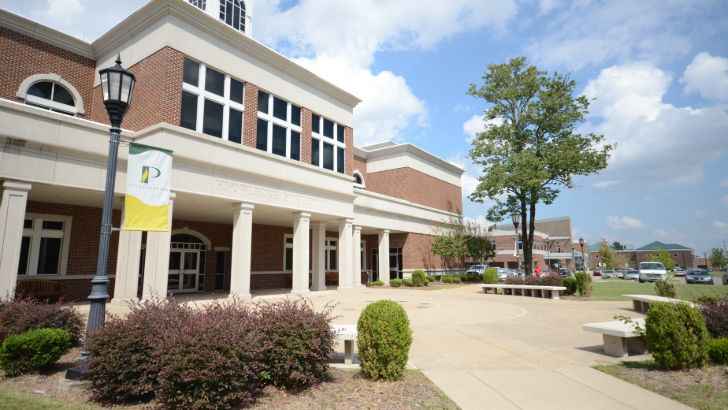
Philander Smith College has long been praised as one of the most influential HBCU colleges across America as it celebrates students from all kinds of minority backgrounds. While it might be doing a great job in certain fields, the college appears to slip in others. The college is home to just 760 students, but most of them end up dropping out before the end of their course. With only 30% graduating and a median salary that sits $10,000 under the national average six years after graduating, it might be no surprise that so many students leave.
Edward Waters College, Florida
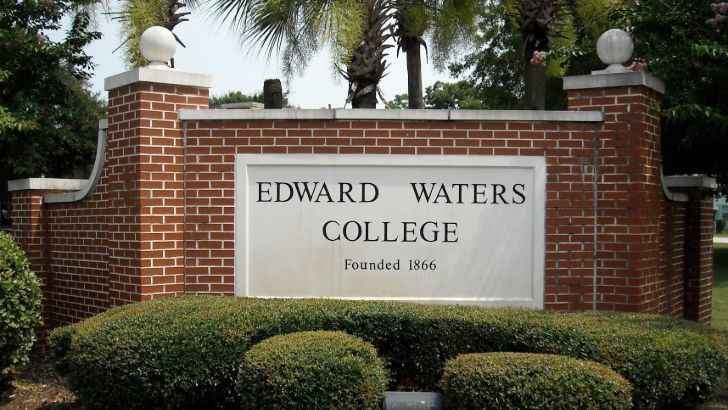
Some students find it tough to find a positive when it comes to Edward Waters College in Florida. That’s not a great place to start. One thing that worries many students is the low graduation rate, as just 19.6% of students make it all the way to the end of their course. This is also topped off with the high fees, as many students have an average debt of $22,558. The final aspect that gets many students is the low median salary that sits at $25,900 six years after graduation.
The Southern Baptist Theological Seminary, Kentucky
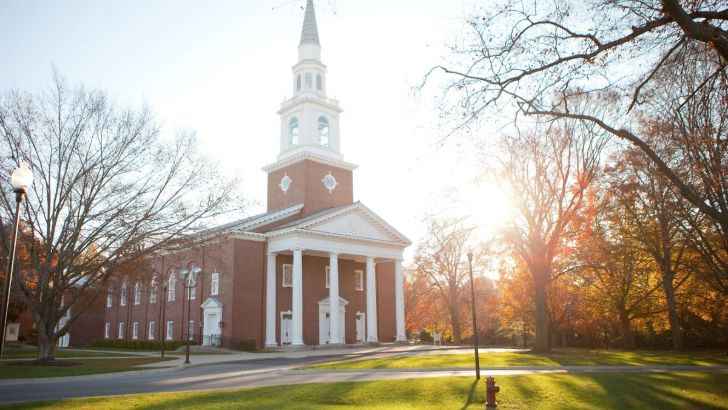
Believe it or not, but this college first owned its doors back in 1859 and has welcomed students ever since. Nowadays. The Southern Baptist Theological Seminary in Kentucky welcomes around 3,000 students, making it one of the smaller colleges across America. It’s pretty picturesque and offers a selection of courses. In fact, 46% of students graduate from the college, meaning it’s one of the more positive of the worst colleges in America. It’s the crippling debt that gets most people. Some students are still struggling to pay off their tuition decades after they graduated.
School of the Art Institute of Chicago, Illinois
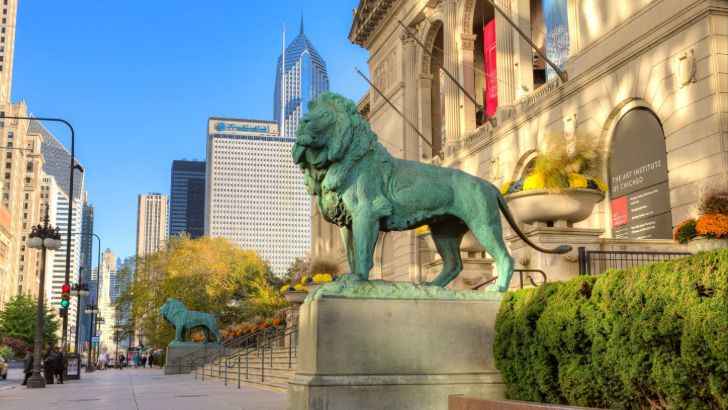
Chicago is a popular city among students as it has plenty of colleges on offer. One of these is the School of the Art Institute of Chicago. While it might be a great place to try and make a name for yourself in design and art, it might not be the most cost-effective way to go about earning your title. Four years here will set you back a whopping $230,000 – and the return of the investment is pretty dismal. In fact, after 20 years of work, an average student will still find themselves $25,000 in the minus.
DeVry University, Illinois
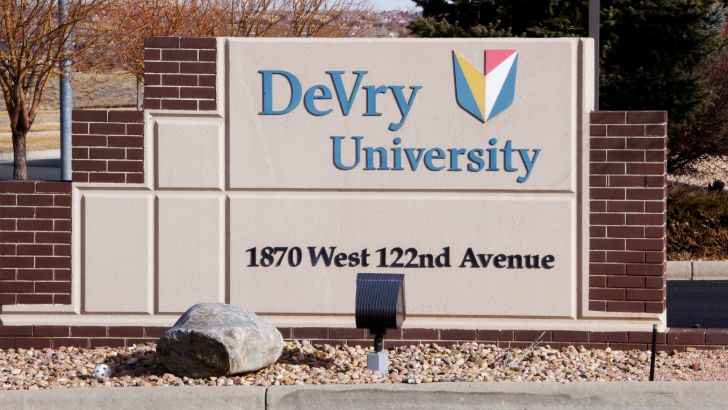
It’s one thing to have high costs or a low graduation rate; it’s another to be called out by the Federal Trade Commission. Unfortunately, DeVry University experienced that thanks to some misleading information. The college was accused of providing misleading information when it came to students’ chances of landing a job after graduation.Students aren’t too keen to stay as DeVry only has a 29% graduation rate. To top it off, students have an average $43,000 debt once they leave. It might be no wonder that DeVry University is considered to be one of the worst across the nation.
Morris College, South Carolina
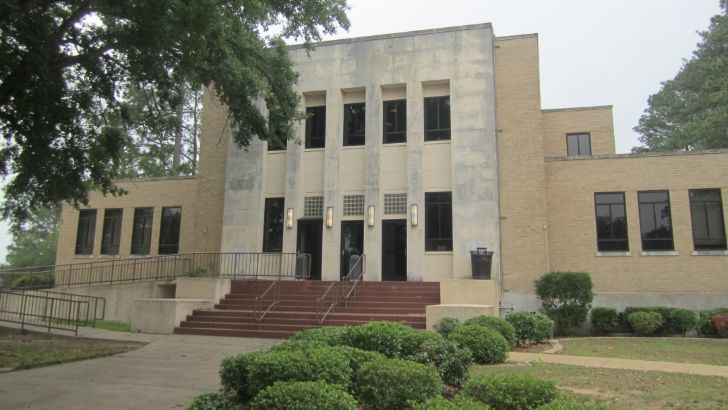
This college first opened its doors back in 1908 and has welcomed a small number of students ever since. Morris College is found in South Carolina and houses around 1,200 students at a time. It might be small, but this college doesn’t appear to be ready to catch up to the times. Many students state that Morris College lacks technology as many people end up transferring colleges or dropping out altogether. In the end, the college is left with a graduation rate of just 29%.
Georgetown University, Washington, D.C.
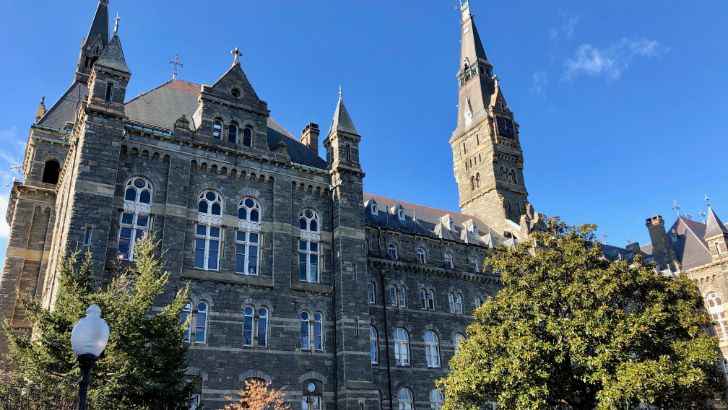
With 17,000 students to its name, Georgetown University is one of the largest colleges in Washington, D.C. Here, students can study everything from law to medicine and just about everything in between. Although it has plenty on offer and the chance to study alongside so many other students, Georgetown University doesn’t have the best reputation. That’s thanks to the accusations that individual members of staff regularly try to remove their students’ rights to freedom of speech. Many people have now been permanently put off from signing up to the college as a result.
College of Rochelle, New York
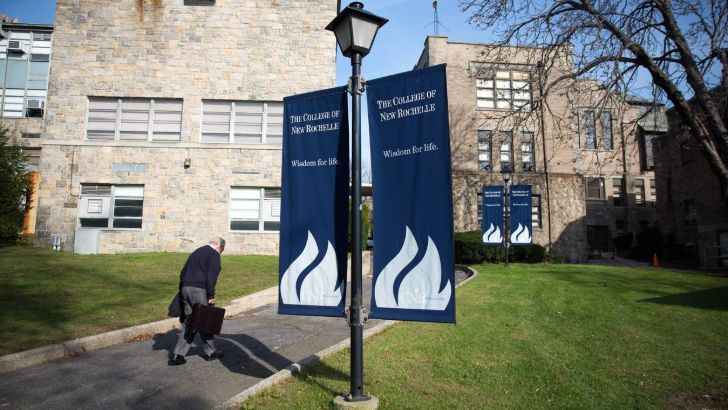
Unfortunately for the College of Rochelle in New York, it has long earned a reputation for being one of the worst colleges in America. Things aren’t too bad when we learn the average starting salary for a graduate is $40,000, but that doesn’t go far when it comes to the cost of living in The Empire State. The graduation rate from the College of Rochelle is 29%, while the high average loan debt of $30,096 means that 12%of graduates end up having to default on their loans. Apparently, things aren’t always brighter in New York.
University of the Southwest, New Mexico
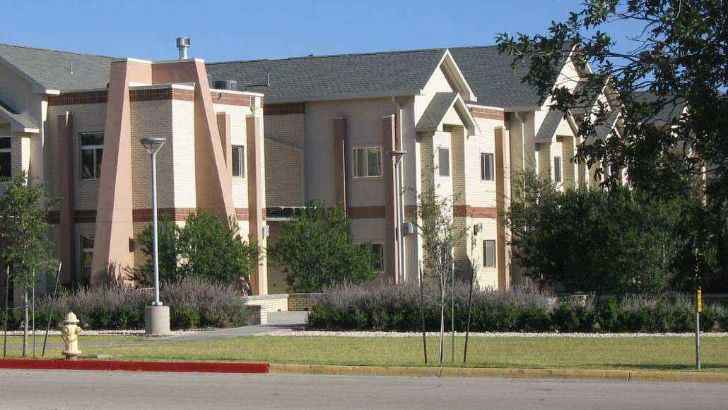
There are times that same establishments have to look at what they are doing and see if it’s time for a change. This might be the moment for the University of the Southwest in New Mexico. The college only accepts around 45% of applicants, yet it has a graduation rate of just 16.1%. Some have also accused the college of being over market compared to others on offer as students walk away with an average debt of $23,112 compared to a median salary of $36,200 after six years.
The Art Institute of Atlanta, Georgia
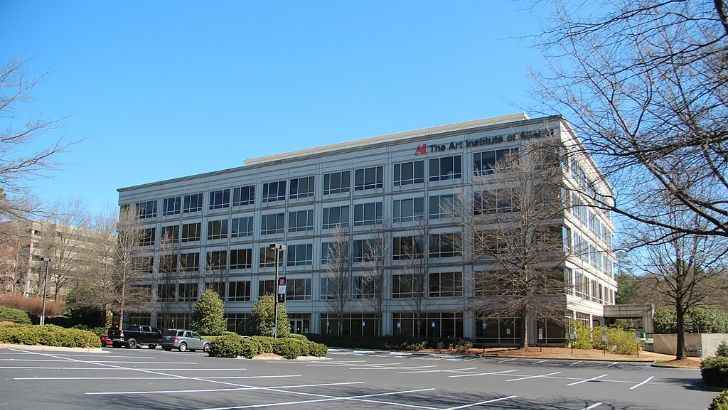
If you plan on heading to art college, then you best be prepared to pay the price. The Art Institute of Atlanta is no exception, as students leave with an average debt of $31,656. This can be tough to pay off as students earn a median salary of $30,900 with their new degree in their hand. Not many students make it to the end debt as only 23% of students here ever graduate. The worst part? Only 11% of students at The Art Institute of Atlanta actually graduate on time.
State University of New York at Potsdam, New York
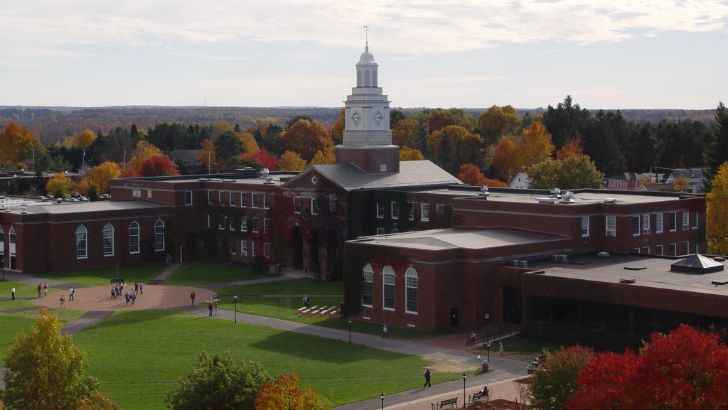
New York has long drawn people in thanks to its wonder and the hope of starting a brand new life. The State University of New York is the beginning of many people’s journey to a new life, but that doesn’t mean that things come cheap. Oh no, students will fork out $82,700 for a four-year course – and there isn’t always much of a payoff for earning your degree. Even after 20 years, students have a return on investment of a pricey negative $34,000. After decades of debt? It might be time to sign up to SUNY.
Harris-Stowe State University, Missouri
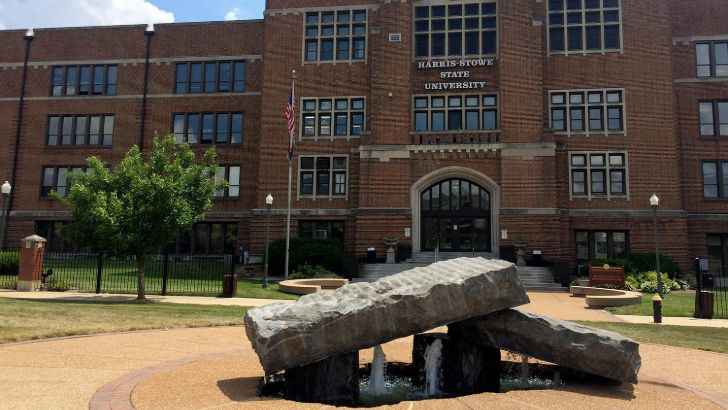
If you want to graduate from college, you might want to avoid Harris-Stowe State University in Missouri, thanks to the 8% graduation rate. That’s right; just 8% of students actually make it all the way through their college course. As if that wasn’t enough, only 2% of students graduate on time, meaning people often have to spend even longer building up the average $30,944 debt. High debts, low median salary, and a meager graduation rate have led to plenty of defaults on loans and many people avoiding Harris-Stowe State University altogether.
University of Maine at Augusta, Maine
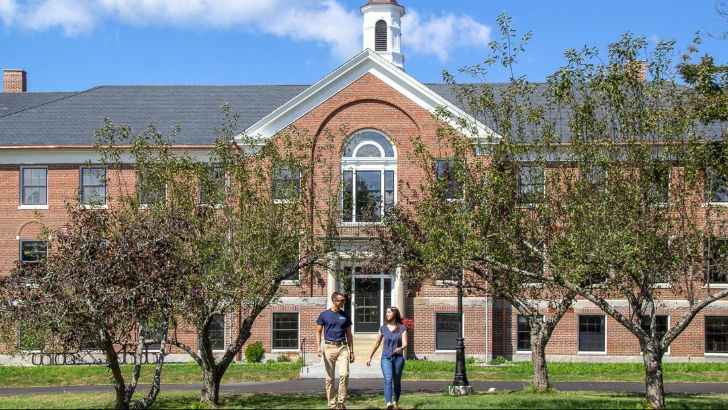
Just because the University of Maine at Augusta is a convenient choice for many doesn’t mean that it’s the best option on the market. The college has a graduation rate of just 27.8% – and that’s merely the beginning. Students at the college typically have debts of around $23,896 and only earn a median salary of $27,700. The athletics at this college is said to be where it really struggles, but things aren’t all bad. The college just sits just below the national average of 83% when it comes to students being employed two years after their course.
Western International University, Arizona
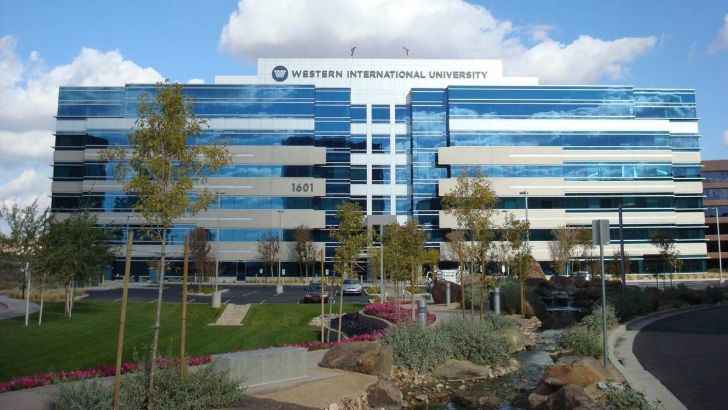
Thankfully, enrolling in Western International University means you will be greeted to a cozy friendship group as the college has around 1,300 students at a time. That’s about where the positives end. Only 15% of students ever graduate after six years. The best bit? Only 1% of students actually graduate on time, meaning a course here could mean that you’re in for the long haul. If you make it out the other side of Western International University, you will be greeted to average debts of $21,228 – and it’s a big ‘if.’
More Movies + TV Shows
-


Star Wars Behind-The-Scenes Photos
-


The Batman Review
-


Things Only Americans Think Are Normal
-


Ranking The NBA’s Best Point Guards Of All Time
-


Millennial Buying Trends That Are Ruining These Once Popular Industries
-


Hollywood’s Shortest Men In Entertainment
-


American Pickers’ Biggest Buys Over The Years
-


Perfectly Timed Photos That Are Hilarious
-


The Highest Paid Newscasters On Television
-


Dog Breeds Not Meant For Your Home
-


Inside Jason Sudekis and Olivia Wilde’s doomed romance as custody…
-


Trendy Things That Used To Be Lame

